How to use blending lines
Today we’re going to talk about blending lines – a powerful, easy-to-use tool that will help your students become masters at decoding!
It’s the fourth post in our 10-part series about teaching phonics.
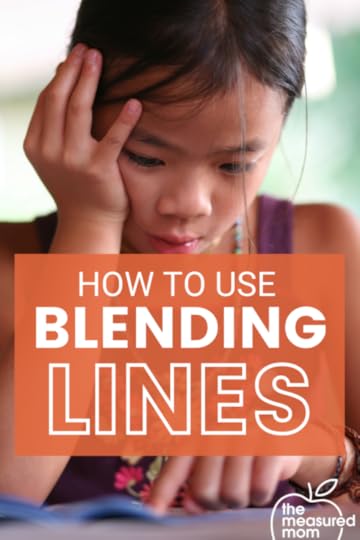
Blending is the stringing of letter sounds to read a word.
There are two main types of blending:
Successive blendingFinal blending*Weird but important note: Some phonics experts use the terms “successive blending” and “final blending” differently. Beck and Beck (Making Sense of Phonics) use the terms as I will use them in this article. Wiley Blevins, in his book (A Fresh Look at Phonics) switches the terms around.
Successive and Final BlendingSuccessive blending
Successive blending is an excellent way to introduce blending to your students, and children who struggle will benefit from extended use of this approach.
The power of successive blending is that it helps students keep the sounds in their heads; short-term memory issues are a real problem for students who sound out p-a-t and come up with “tan.”
While you should phase out successive blending after a few weeks, Beck and Beck recommend temporarily bringing it back when students start reading words with beginning blends (such as flat and swim).
Final blending
Final blending (which I like to call “sound by sound blending”) is more efficient and the method you should use when your students understand the concept of blending.
However, if you are working with an individual student who is struggling, switch back to successive blending.
Watch this quick video to understand both types of blending.
(For a longer video of successive blending, see this post.)
Best practices for teaching blendingIn his book, A Fresh Look at Phonics, Wiley Blevins share these tips for teaching blending:
Model and practice blending often (every day for early readers).When starting blending with new readers, use words that start with continuous sounds (such as mmmm and sssss).Practice blending before reading a story (at least 20 words in 1st grade and up).Select blending lines that include minimal contrasts so students have to fully analyze the words.Create lines that allow you to informally assess your students.Make sure your lines contain differentiated practice to meet everyone’s needs.Include sentences in your lines.What are blending lines?Blending lines are lines of words that students sound out using their phonics knowledge. Blending lines allow students to practice the new focus skill and review previously learned skills.
Students should read the these lines after the lesson but before reading their decodable book.
You can use the lines with a whole class or in a small group phonics lesson.
Sample blending lines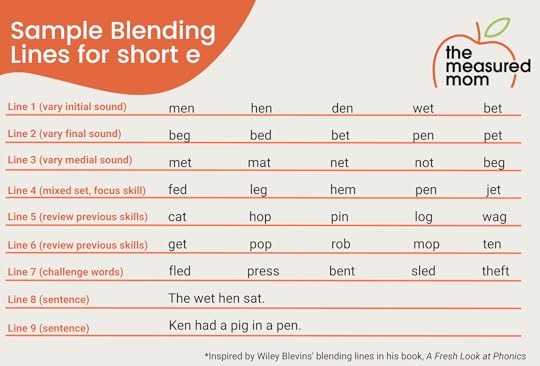
Wiley Blevins’ tips for using blending lines
Model only one or two words at the beginning of the word set. You want your students to do the work.Have students read the words chorally the first time through (observe to see which students drop out as the words become more challenging).Revisit the lines by pointing to words in random order and calling on students to read them. Remember to call on struggling readers for the easier lines and advanced readers for the challenging ones. Keep the whole class engaged by having them give a thumbs-up to indicate when a word is read correctly.Use the lines for multiple days of instruction as a quick review or warm-up.Make copies of the week’s lines for students to take home and practice.Make sure that the time spent on the lines is no more than 5 minutes at a time.More sample blending lines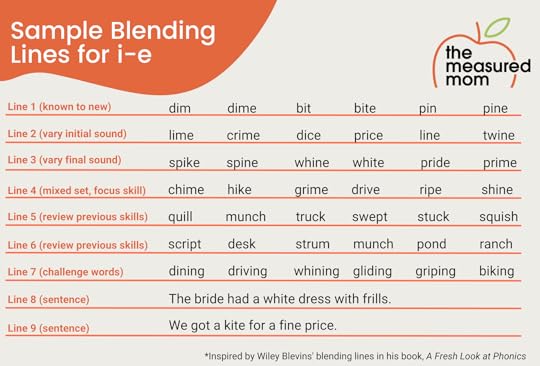
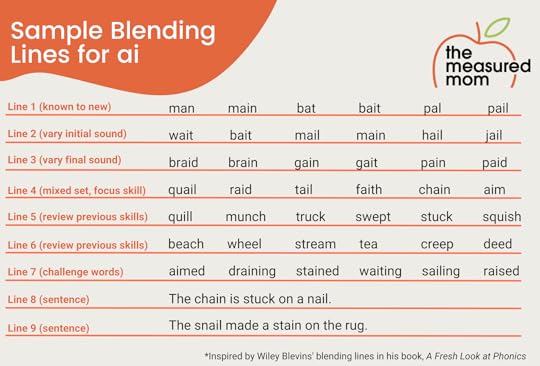
So what do you think?
Are you ready to give blending lines a try?
It can be tricky to write your own blending lines, but I’ve made it easy for you!
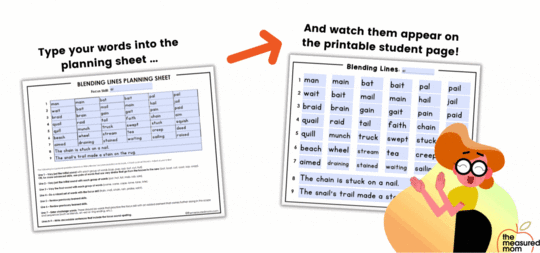
As you can see in the above image, I’ve created a planning sheet for you that reminds you what to focus on for each line.
After you type in the words on the planning sheet, they auto-populate into the student page.
The page prints without the blue boxes, making it the perfect practice sheet for your students.
Just sign up below to get the freebie!
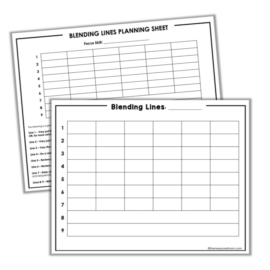
Get your editable blending lines pages!
CLICK TO DOWNLOAD
The post How to use blending lines appeared first on The Measured Mom.
Anna Geiger's Blog
- Anna Geiger's profile
- 1 follower



